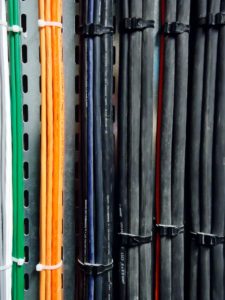 EPDM (ethylene propylene diene monomer) and Viton are two thermoset elastomeric polymer materials that are used in applications across many industrial sectors. Though there are differences between the two, each material is noted for its very good compression strength, flexibility, and weatherability. However, what makes EPDM rubber sheeting a popular roofing material and Viton a popular gasket material for automobiles is a good example of the contrast between the two.
EPDM (ethylene propylene diene monomer) and Viton are two thermoset elastomeric polymer materials that are used in applications across many industrial sectors. Though there are differences between the two, each material is noted for its very good compression strength, flexibility, and weatherability. However, what makes EPDM rubber sheeting a popular roofing material and Viton a popular gasket material for automobiles is a good example of the contrast between the two.
Viton is a fluoropolymer and EPDM is derived from ethylene and propylene. The result is a contrast in two important properties—chemical resistance and temperature tolerances—between the two materials. Knowing the mechanical properties of the two will help consumers select the right material to meet their application needs.
Applications for EPDM Rubber Sheeting
As the name suggests, EPDM’s two main ingredients are ethylene and propylene, by-products of oil and natural gas, with a small amount of diene monomer. The material is very durable and versatile synthetic rubber. As a thermoset polymer, it retains its shape after stretching and can hold its physical properties for decades.
Though there are many synthetic rubbers that perform well in and offer high-temperature resistance, few offer low-temperature performance like EPDM. With an effective operating temperature range of -45C to 145C (-49F to 293F), EPDM works in near any temperature. The wide temperature tolerances make EPDM an ideal choice for creating seals and insulation in cold weather conditions and cold, wet environments. In fact, it is well-known as a weather and ozone resistant rubber. EPDM rubber sheeting is used in roofing, freezer room seals, electrical insulation, tubing, solar panel heat collectors, and O-rings. In the automotive industry, it is used in radiator and heater hoses, window and door seals, wire and cable connectors and insulators, diaphragms, and weather stripping.
In addition to its excellent temperature tolerances, EPDM also offers exceptional moisture and chemical resistance. In addition to hot water or steam, it can withstand many diluted acids and chemicals, silicone oils and greases, sodium hydroxide solutions, detergents, and caustic potash solutions. However, it is not suitable for hydrocarbons, such as oils, gasoline, kerosene, and mineral oil-based lubricants. Because of its diverse chemical compatibilities and temperature tolerances, EPDM is a widely used sealing material.
Viton Rubber Sheet for High-Performance & Chemical Resistance
Viton is a fluoropolymer elastomer or synthetic rubber. Fluoropolymers, in general, offer high resistance to solvents, acids, and bases, but Viton is also a dense material, which makes it exceptionally strong. At elevated temperatures, Viton maintains good mechanical properties, remains substantially elastic, and is resistant to oils and chemicals.
Viton’s temperature tolerance range is impressive—operating effectively from -20C to 210C (-4F to 410F). This high-temperature tolerance makes it a choice material in many high-temperature applications. It is used in O-rings and gaskets for engines, valve seals, and other molded or extruded products. It also offers UV-resistance, has very good weatherability, and resists other atmospheric conditions.
Viton also has exceptional chemical resistance and resists corrosion from numerous fluids and mineral acids. It is compatible with oils, fuels, and lubricants. It is resistant to oxygenated automotive fuels, aromatic hydrocarbons, fungus, mold, and, because of its density, it is inherently more resistant to burning than most other synthetic rubbers.
Viton is an exceptional material with a wide range of applications. It is, however, approximately eight times more expensive than EPDM. In smaller quantities, the pricing may not be a significant deterrent in purchasing the product. It may well be when ordering a large quantity.
Need Help Choosing a Material for Your Application?
Each material has its own set of properties that support numerous applications. With its low permeability to a wide range of substances, Viton resists degradation and corrosion from more chemicals and fluids than EPDM. In fact, Viton offers near-universal chemical resistance for sealing applications for oils, fuels, and mineral acids. It’s also exceptionally strong and durable. EPDM’s performance in low temperatures makes it a better choice over Viton in cold environments. Its exceptional resistance to water and steam (in any temperature) also makes it a better choice over Viton. In the end, the selection of either material is dependent on the mechanical properties required of the application. Contact us for more information.


